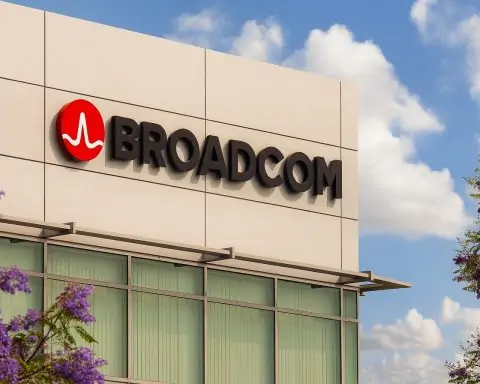- Share price: MicroVision, Inc. (NASDAQ: MVIS) closed Tuesday, November 18, 2025 at about $0.94, up roughly 2.4% on the day. Pre‑market quotes early this morning pointed to around $1.00 per share. [1]
- Market cap & volatility: The company’s market capitalization sits near $288 million, with a 52‑week range of $0.80–$1.95 and a beta above 2, underscoring how volatile MVIS remains. [2]
- Fresh headline today: A new Yahoo Finance piece titled “Do MicroVision’s (MVIS) Narrower Losses Hint at Sustainable Operational Improvements?” frames last week’s Q3 report as a step toward tighter cost control, while stressing that revenue is still only about US$241,000 with a net loss around US$14.2 million. [3]
- Balance sheet: MicroVision ended Q3 2025 with roughly US$99.5 million in cash and equivalents, additional access to capital via its ATM and convertible facilities, but quarterly cash use of about US$16.5 million on operations and inventory build. [4]
- Strategic moves: The company is leaning hard into three themes:
What’s new for MicroVision on November 19, 2025?
1. Yahoo Finance focuses on “narrower losses”
The most notable fresh MVIS headline today is Yahoo Finance’s analysis asking whether MicroVision’s “narrower losses” in Q3 2025 signal real operational progress or just a temporary improvement. [8]
Key points pulled from that article and the underlying earnings data:
- Q3 2025 revenue: about US$241,000, slightly below analyst expectations of ~US$250,000. [9]
- Q3 EPS:‑US$0.05, beating consensus estimates that were closer to ‑US$0.06 to ‑US$0.07 per share. [10]
- Net loss: around US$14.2 million for the quarter. [11]
The article essentially underscores a familiar MVIS pattern:
Costs are being contained better than expected and EPS beats the Street — but revenue is still tiny, and losses remain large in absolute terms.
2. Stock price and technicals: still a speculative battleground
From multiple market data providers, MVIS looks like a classic speculative small‑cap:
- Last regular close: about $0.94 (Nov 18).
- Pre‑market (this morning): quotes near $1.00, a gain of roughly 5–6% in extended hours. [12]
- Market cap: ~$288 million. [13]
- 52‑week range:$0.80–$1.95. [14]
On the technical side, Investing.com’s dashboard as of 1:31 PM GMT today shows: [15]
- RSI (14‑day): ~52.8 – basically neutral, suggesting neither overbought nor oversold conditions.
- Short‑term moving averages (5‑, 10‑, 20‑day) cluster around $0.93–$0.94 and are flagged as Buy signals.
- Longer‑term moving averages (50‑, 100‑, 200‑day) sit above the current price (roughly $0.97–$1.14) and show Sell signals, reflecting how far MVIS has fallen from earlier levels.
Interestingly, the same page labels technical indicators as “Strong Buy” while a FAQ block still calls the daily picture a “Strong Sell” based on the mix of buy vs. sell signals — a good summary of how mixed and timeframe‑dependent the technical story is. [16]
Add in a beta over 2, and MVIS remains a name where short‑term traders can see big swings in either direction. [17]
Q3 2025 in detail: small revenue, big burn, long runway
MicroVision’s official Q3 2025 press release, plus a detailed GuruFocus recap, give the clearest picture of where the business stands. [18]
Core financials
For the quarter ended September 30, 2025:
- Revenue: about US$0.2–0.24 million, largely from early lidar and software engagements.
- Operating expenses (R&D + SG&A): around US$12 million, including roughly US$1.2 million in severance and US$1.4 million in non‑cash charges. [19]
- Net loss: roughly US$14.2 million, or ‑US$0.05 per share. [20]
- Cash used in operations: about US$16.5 million in the quarter, including a one‑time US$3.2 million inventory build to support upcoming programs. [21]
- CapEx: minimal, roughly US$0.1 million. [22]
Liquidity and capital structure
Despite the ongoing losses, the balance sheet is relatively strong:
- Cash and cash equivalents: about US$99.5 million at quarter‑end (cash + marketable securities). [23]
- Available capital: roughly US$46.2 million still available under the at‑the‑market (ATM) equity facility and another US$30 million undrawn under a convertible note facility. [24]
- Convertible note outstanding: around US$18 million principal, convertible at US$1.60 per share. [25]
Management and outside commentators generally frame this as runway into 2027 at current burn rates — but that assumes the company keeps tapping equity and/or convertible capacity, which is inherently dilutive.
Business highlights from the Q3 call
The Q3 earnings call, summarized by GuruFocus and TipRanks, stressed several strategic moves: [26]
- MOVIA S launch: an ultra‑wide field‑of‑view solid‑state lidar sensor, part of a short‑range family aimed at automotive, industrial and defense customers, with an emphasis on lowering cost per sensor.
- Tri‑lidar architecture: a product strategy that combines short‑, mid‑ and long‑range lidar to cover a vehicle’s environment more completely.
- Stronger go‑to‑market: MicroVision says it is now demoing its lidar and perception software to multiple automotive OEMs, industrial customers and autonomous vehicle players, backed by new hires in global sales and engineering leadership.
On the negative side, the call acknowledged:
- Current lidar adoption is still slower than hoped, partly because costs remain too high for broad deployment.
- Industrial revenue is taking longer to materialize, with several customers pushing timelines out.
- Chinese lidar makers remain fierce competitors on price, forcing MicroVision to differentiate with software and open frameworks, not just hardware cost. [27]
Strategic moves: Scantinel, FMCW lidar and defense expansion
Scantinel Photonics: extending into long‑range FMCW lidar
One of the biggest strategic headlines around MicroVision this month is its plan to acquire the FMCW lidar business of Scantinel Photonics.
According to MicroVision’s own press release and coverage in Optics.org: [28]
- MicroVision and a funding partner will set up a new German entity, Scantinel GmbH, which will acquire Scantinel’s FMCW technology and related assets.
- The deal brings over a team of around 20 engineers in Ulm, Germany, along with technology originally developed with support from Zeiss and other European partners.
- The technology uses 1550 nm FMCW (frequency‑modulated continuous wave) lidar, focused on ultra‑long‑range sensing for commercial vehicles and autonomy applications.
- Closing is expected by the end of 2025, subject to regulatory approvals in Germany.
Why this matters:
- It fills the long‑range corner of MicroVision’s tri‑lidar roadmap, complementing the shorter‑range MOVIA products.
- FMCW lidar can measure both distance and velocity with high precision and better interference rejection, which is attractive for congested roads and trucks.
- It also places MicroVision squarely in the same advanced‑lidar conversation as firms like Aeva, which has been pushing FMCW technology with support from large partners. [29]
New aerial systems team and Virginia test facility
On November 6, 2025, MicroVision announced it had established a new aerial systems team and office in Virginia, complete with an airstrip and test infrastructure. [30]
Key details:
- The facility is near Washington, D.C., aiming squarely at defense, intelligence, surveillance and reconnaissance (ISR) and unmanned systems.
- The team is tasked with developing drone‑agnostic lidar and perception solutions that can be integrated across different platforms.
- This move builds on earlier steps, including adding defense advisors and integrating MOVIA lidar into NVIDIA DRIVE platforms for perception‑enhanced solutions. [31]
For investors, the defense angle offers a potential second leg of growth beyond automotive — but defense sales cycles can be slow and binary, hinging on a few key contract wins.
Analyst views vs. retail sentiment
Street coverage: sparse but bullish
MicroVision still has very limited traditional analyst coverage, but the few firms following it remain constructive:
- WestPark Capital reiterated a “Buy” rating on October 21, 2025 with a US$2.00 price target. [32]
- D. Boral Capital has maintained a “Buy” rating with targets around US$2.50–US$3.00 in recent months. [33]
GuruFocus notes that the average 12‑month target from two covering analysts is about US$2.50, implying over 100% upside from current levels. [34]
That said, those targets rest heavily on future design wins and revenue ramp that have not yet materialized, and they come alongside persistent share dilution and ongoing losses.
Retail sentiment: highly speculative and very active
Retail interest around MVIS remains intense:
- The r/MVIS subreddit continues to host daily “Trading Action” and “Early Morning Trading” threads, including one specifically for Wednesday, November 19, 2025, where traders share intraday ideas and technical charts. [35]
- On TradingView, community “Ideas” for MVIS frequently project multi‑dollar and even double‑digit price targets based on pattern analysis, wedges and harmonic setups. [36]
- Simply Wall St’s “Community Narratives” section features a contributor piece arguing that MicroVision could see future revenue growth of over 300% and labels the stock “significantly undervalued,” though it also clearly flags this as user‑generated commentary, not formal advice. [37]
The bottom line: professional coverage is cautiously bullish but thin, while retail sentiment swings between conviction and frustration, amplified by MVIS’s high volatility and history of big rallies and drawdowns.
Lidar landscape: Luminar’s trouble, MicroVision’s opportunity?
Today’s lidar news flow isn’t just about MicroVision. A significant development this week:
- On November 18, 2025, Optics.org reported that Volvo has terminated its supply deal with Luminar Technologies, a major competitor in long‑range automotive lidar. [38]
Luminar’s challenges — including high cash burn, workforce cuts and an SEC investigation — highlight how brutal and capital‑intensive the automotive lidar race has become. [39]
For MicroVision:
- It could benefit at the margin if automakers reconsider their lidar partners and seek alternatives.
- But it’s also a reminder that even well‑known lidar players can struggle, and that design wins are hard to secure and easy to lose.
Key risks and what investors are watching next
Even with today’s more positive framing around “narrower losses,” MicroVision remains a high‑risk, high‑reward story.
Main risks
- Tiny current revenue: A few hundred thousand dollars per quarter isn’t enough to prove product‑market fit or support the cost structure. [40]
- Cash burn & dilution: Burning ~US$16.5 million per quarter when revenue is near zero means future equity raises and dilution are likely if revenue doesn’t ramp quickly. [41]
- Execution on Scantinel and defense: Turning the Scantinel acquisition and the Virginia defense hub into meaningful, recurring revenue will take time, certifications and customer commitments. [42]
- Competitive pressure: Established lidar names and aggressive Chinese competitors continue to push prices down and technology forward. [43]
What to watch after November 19, 2025
Investors tracking MVIS will likely focus on:
- Closing of the Scantinel deal and more detail on product roadmaps and customer engagements using FMCW lidar. [44]
- Any design‑win announcements with automotive OEMs, trucking/lifting customers, or large industrial/logistics players.
- Defense contracts or pilot programs tied to the new aerial systems team. [45]
- Updated cash‑burn guidance and whether management can bend the expense curve without stalling R&D progress.
- How the share price behaves around key technical levels identified by traders (for example, short‑term resistance near prior peaks and 50‑/200‑day moving averages). [46]
Final word
For today, November 19, 2025, the story around MicroVision is:
A lidar and perception company with ambitious technology, a decent cash runway, very small current revenue, and a stock that trades like an option on future design wins.
Anyone considering MVIS should treat it as a speculative position, do their own due diligence, and make sure it fits their risk tolerance, time horizon and diversification needs — not just the excitement of today’s headlines.
References
1. stocktwits.com, 2. stocktwits.com, 3. finance.yahoo.com, 4. ca.investing.com, 5. ca.investing.com, 6. optics.org, 7. microvision.com, 8. finance.yahoo.com, 9. www.webull.com, 10. www.webull.com, 11. finance.yahoo.com, 12. stocktwits.com, 13. stocktwits.com, 14. stocktwits.com, 15. www.investing.com, 16. www.investing.com, 17. stocktwits.com, 18. ir.microvision.com, 19. ca.investing.com, 20. ca.investing.com, 21. ca.investing.com, 22. ca.investing.com, 23. ca.investing.com, 24. ca.investing.com, 25. ca.investing.com, 26. ca.investing.com, 27. ca.investing.com, 28. optics.org, 29. optics.org, 30. microvision.com, 31. microvision.com, 32. www.gurufocus.com, 33. www.gurufocus.com, 34. www.gurufocus.com, 35. www.reddit.com, 36. www.tradingview.com, 37. simplywall.st, 38. optics.org, 39. optics.org, 40. ca.investing.com, 41. ca.investing.com, 42. optics.org, 43. ca.investing.com, 44. optics.org, 45. microvision.com, 46. www.investing.com







